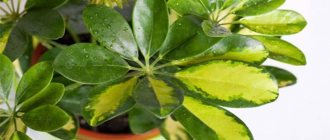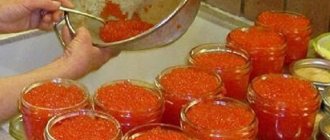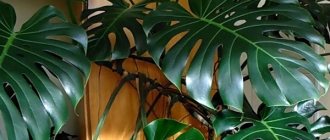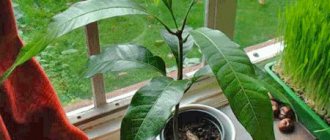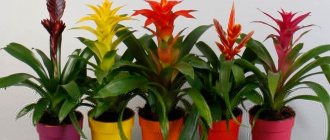When and how does it bloom
It is very difficult to achieve flowering of a plant in a house or apartment.
And this is only required if it is important for the owner that his alocasia turns out to be exceptional and still blooms. The inflorescence-cob consists of small pinkish flowers, covered with a white or green blanket. Many representatives of the aroids bloom this way, and the zamioculcas cob looks similar and even more attractive. Only an adult plant that reaches the age of at least 4 years blooms.
Important! Flowering greatly weakens the plant, the number of leaves may be reduced, and their growth slows down. Therefore, it is better to remove the cob as soon as it begins to appear
Inflorescence spadix
Alocasia domestica
The name “elephant’s ear” has stuck among flower growers. This unusual plant is highly disliked for its toxicity and therefore is not recommended to be grown in homes where there are small children or animals. You should be especially careful when transplanting a flower and be sure to use gloves. The most poisonous variety is the Copper-Red variety.
Appearance
In nature, there are about seventy species of this plant. All of them are united by external similarity in key indicators.
- The inflorescences are small, beige, white or pink. Their shape resembles an ear of corn.
- The leaves are large, oblong and pointed towards the end. The color of the leaf blade is unusual, dark green with beige veins, forming a magnificent pattern.
- The root system is tuberous. The roots have a light color and elastic structure.
- The leaf petioles are dense and rather long. Thanks to its water mouths, Alocasia retains water under conditions of high humidity.
Only a few species of this plant are grown indoors.
https://youtube.com/watch?v=Kzb-4Ro-k14
Plant species
Some gardeners try to keep several varieties of Alocasia at once. They all have an attractive appearance, but differ in the shape of the bush. The most popular among them are:
- Sandera. This variety has long, narrow leaves with notched lobes. Their color is dark with a silvery tint, and the petioles are long and brown.
- The low ornamental bush of the Black Velvet variety is very popular in home cultivation. The heart-shaped leaves have a velvety surface. It blooms with pink flowers collected in a spadix.
- Large-rooted Alocasia grows up to two meters tall. It blooms with large cobs that form a blanket. Their length reaches thirty centimeters. The leaves are long and wide, the shape of the plate is oval. The fruits of this variety are also large and rich red in color.
- Alocasia Polly grows up to seventy centimeters tall. Its leaves have bright white veins, and the leaf blade itself is pointed. Polly is the only one of all Alocasia species that can please with its flowering. Its flowers are small, collected in a spadix. This hybrid variety has a delicate, pleasant aroma.
- Amazonian Alocasia has long petioles reaching sixty centimeters in height. The leaves are dark with lateral veins, their shape is elongated and pointed. The spadix-shaped inflorescence is about ten centimeters long. Blooms with pink flowers with a veil. When grown indoors it does not bear fruit.
- The Low variety has an unusual and very attractive appearance. This flower has leaves with bright white veins and the underside of the leaf has a purple tint. The shape of the leaves resembles arrows. Lowe's height can reach one meter.
- The fragrant Alocasia grows up to one meter in height. Its leaves are large and fleshy, and its petioles are long. It blooms in a soft blue color, which is extremely rare at home.
- Alocasia cape is also suitable for a home greenhouse. Its height usually does not exceed eighty centimeters. The leaves are bright and dense, slightly pointed at the tips.
- Poisonous Copper-red is not recommended for home cultivation. It has bright emerald leaves, which are dark green on the inside.
All other varieties are slightly poisonous and can easily be grown in home greenhouses. What is required for an Alocasia flower?
Lighting alocasia flowers
There has long been a widespread misconception that alocasia is shade-loving. This is not true, the plant respects bright light, which should be slightly diffused. This especially applies to those varieties that have variegated colors. If you keep alocasia in the shade, its foliage will become monochromatic and faded. New leaves will not grow large, and the weakened flower may dry out.
Installing the plant on a sunny windowsill would also be the wrong decision. The ideal option would be to create artificial shade using blinds or to grow alocasia in the east or west; the southern part is unlikely to be suitable. A window sill facing north can also be a good place for this flower to live. It is important, if necessary, to use artificial lighting, especially in winter, when daylight hours are already quite short.
Medicinal properties
Of the 70 varieties of this tropical plant, only two are assigned medicinal properties:
- Alocasia macrorrhizos (large rhizomatous, popularly called Arum indica), the thickened roots of which can be confused with the roots of ginseng, bright green heart-shaped leaves have succulent petioles up to a meter long;
- Alocasia odora (fragrant) - shield-like leaves meter long on trunks reaching 2-2.5 m.
Fuchsia ampelous - description of varieties, cultivation and care at home
The two varieties are easy to confuse. The difference between alocasia fragrant is that it has stolons - side shoots that quickly die off. They are used for reproduction. Underdeveloped foliage and axillary buds are located on the stolons. Large-rooted alocasia does not have such shoots.
Alocasia domestica is a plant that is treated using alocasia tincture.
Important! All plants in this family are toxic. Do not touch the leaves unnecessarily, tear them or rub them in your hands, allowing the juice to come into contact with the skin.
The roots of Alocasia macrorrhizos are often passed off as ginseng roots. This ginseng tincture can be fatal if taken orally.
The leafy mass of these plants disinfects the air in the home, absorbing dangerous emissions of formaldehyde, phenol and others like them. In addition, the phytoncides that make up the leaf affect staphylococci and influenza viruses. They also kill E. coli and streptococci.
This can also be attributed to medicinal properties.
Feeding alocasia with fertilizers
In addition to watering, caring for alokisia at home cannot be done without regular feeding. You can use both mineral fertilizers and organic matter. It is recommended to fertilize the plant in the spring and summer during the active growth of the flower. For feeding, use universal fertilizer. Fertilizing should be done twice a month after abundant watering. Do not water fertilizer on dry soil under a flower. The plant may die if the root system is burned. In winter, it is not recommended to feed Alocasia. The plant is in the winter dormant phase and only begins its rapid growth in the spring.
Types of Alocasia
Varieties of alocasia are represented by a variety of leaf configurations and their colors. Along with the variety of giant alocasia “Elephant Ear” with meter-long leaves, dwarf varieties up to 15 cm in length are found in indoor floriculture. A spacious mansion hall or greenhouse is more suitable for massive plants.
In a standard apartment, the plant will occupy a large area, so priority goes to Alocasia Polly. The height of the decorative exotic plant is about half a meter, and the emerald greenery of the chic medium-sized leaves is decorated with contrasting snow-white veins.
Large-rooted alocasia has a height of up to 200 cm, its peduncle is 30 cm long. Its berries are bright red and shiny. Flowers of a yellow-green palette. The leaves are heart-shaped, 40-80 cm wide and 50-90 cm long.
Alocasia Sander has a shorter root system than the previous species. Its flowers are brown-green, arrow-shaped with veins like a feather. Their width is 15 cm and their length is about 40 cm. The color of the leaf blades is greenish with a sheen, and white at the edges.
The shoot of the Amazonian variety is about 20 cm high and pinkish-green in color. The leaves are dark green, shield-shaped, longitudinal, with a span of about 25 cm and a length of 50 cm. The flowers are white-green. Does not bear fruit in indoor environments.
Clopus alocasia with a length of 60 to 100 cm. The leaf blades are green, gigantic with a span of 80 cm and a length of 100 cm. Only the cap category can bloom, which is more powerful than the others with many small leaves. Flower with a diameter of 10 cm. Fruits 6-8 cm.
Alocasia Polly is a hybrid of Sandera. Duration 70 cm. The leaf blades are green with a dark color and highlights, measuring 50 cm by 20 cm. When flowering, it forms a spadix with small flowers and bears fruit.
Reproduction
Alocasia reproduces mainly by vegetative means. Seed propagation is very complicated due to rare flowering and the loss of decorativeness by the plant when the fruits ripen. In addition, the seeds have low germination. Another difficulty is that the varietal characteristics of variegated specimens are not preserved when propagated by seeds. It is possible to grow a full-fledged plant in this way only after a year.
The simplest and most effective methods of propagating alocasia are dividing the rhizome, planting tubers and cuttings. You can grow young alocasia using these methods in just 1–2 months.
Rhizome division
Adult alocasia can form daughter plants with independent roots. It is advisable to plant them out during spring transplantation. To do this you need to perform a number of simple operations:
Carefully remove the entire earthen lump from the pot. Wash the soil from the rhizome. Carefully separate the shoots with a sharp, sterilized knife. Sprinkle the cuts with charcoal powder. Plant the plants in suitable sized pots with drainage and a light substrate.
Tuber planting
Another simple and effective way to propagate alocasia is to separate the nodules during transplantation. The process is as follows:
- Remove the alocasia from the pot.
- Wash off the soil from the rhizome.
- Using a sharp, sterile knife, carefully separate the nodules that have formed on the roots.
- Treat the cuts with crushed coal.
- Bury the nodules 1–2 cm into the sphagnum moss so that the top is visible.
- Water.
- Provide good lighting and a temperature of 23–25 degrees.
- Cover with a jar or film.
- Expect seedlings to appear in 3–6 weeks.
How to propagate alocasia by nodules - video
Using cuttings
This method is less popular. It is used primarily in cases of plant damage. Its essence comes down to the following basic operations:
- Split the broken stem.
- Cut it into pieces containing 1-2 kidneys.
- Bury it 1–2 cm into the sand and peat substrate.
- Water.
- Create a greenhouse effect using a jar, glass or film.
- Ventilate the plantings daily for 10–15 minutes.
- Maintain high humidity and temperature 23–24 degrees.
- After rooting (after 3–6 weeks), remove the greenhouse.
- Plant young plants in prepared pots.
Reproduction by nodules
When a plant is grown correctly, several small nodules form on its tubers. After the baby nodules have matured, a new alocasia can be grown from them.
A similar method of reproduction is possible during spring. During this period, plant tubers appear above the ground. To germinate the nodules, they are wrapped in moss and the plant is placed in a room where the temperature is maintained at 22°C. At the same time, greenhouse conditions are created by putting on plastic film. The sprouted tuber is planted after at least one leaf appears, and after three leaves appear, the plant can be fed. After the formation of a good root system, the seedling is transplanted into a larger pot.
Caring for a plant at home
Watering rules
The frequency of watering is directly related to temperature. The hotter it is, the more often watering is done. In summer, this happens approximately once every 2–3 days. In winter, water less often - once every 8-10 days. Wait until the top layer of soil dries out before watering again.
The water used for irrigation must stand for at least 6 hours. Its temperature should exceed room temperature by 2 - 3°C. Be sure to drain the water from the pan.
The main nuances of feeding
Fertilizing begins from April to October - once every 14 days, using universal mineral fertilizers, for example, Agricola 7. It contains nitrogen necessary for rapid growth. It is best to alternate mineral fertilizers with organic ones, which are diluted in a ratio of 1:30 and infused for 5 days.
In winter, fertilizing is not done. But if your alocasia continues to grow during this period, you can sometimes fertilize it by diluting the fertilizer 3 times more than indicated in the instructions.
Flowering period
Flowering is an infrequent occurrence when grown at home. Adult plants that are at least 5 years old are capable of flowering. This happens in the spring. The alocasia flower is not particularly decorative; in addition, the specific smell of some species can cause headaches. For a healthy and strong plant, the flowering process does not bear much stress. Nevertheless, experienced flower growers recommend removing the peduncle by sprinkling the cut area with crushed coal. If the plant is weakened, then flowering can slow down the growth of leaves and lead to their shrinkage. As the flower grows, older leaves may begin to die.
If you have set yourself the goal of making alocasia bloom, remember that the main conditions for this process are proper care and the creation of the right microclimate. Some experts advise briefly drying out the earthen ball at the beginning of spring. This shake will start the flower bud setting mechanism.
Alocasia blooms in spring
Rest period
The resting time of alocasia lasts from October to March, but it is not clearly expressed. During this period, the flower slows down greatly, but does not stop growing. Stop applying fertilizers during the dormant period. Watering is significantly reduced, but the soil is not allowed to dry out. In autumn, the plant's leaves begin to turn yellow and need to be cut off. It is best to remove the pot from the window. The temperature is maintained within 20°C.
During the dormant period, the plant slows down its growth
Table: errors in care and their elimination
| Problem | Cause | Elimination |
| The plant is experiencing slow growth | There is not enough nitrogen in the soil. | Feed alocasia with organic matter or nitrogen-containing mineral fertilizers. |
| The leaves are turning yellow |
|
|
| The leaves begin to fade |
|
|
| Alocasia has dropped its leaves | This is how the plant can react to flowering. | Remove the dried peduncle, the remains of faded leaves and prepare the plant for the dormant period. |
| The leaf blade loses color, young leaves decrease in size | Not enough light. | Move the plant closer to the light. |
| The leaves become deformed, curled, and become crispy to the touch. | Excess fertilizer. |
|
| The leaf blade is covered with dry brown spots | The result of a sunburn. | Shade the plant. |
| The tips of the leaves begin to release drops of water |
|
|
Plant characteristics
The tropics of Southeast Asia are considered the birthplace of the flower. Representatives of this plant are also found in Malaysia and Ceylon. The uniqueness of alocasia is that it can, using foliage, “dump” unnecessary moisture found in the soil and air.
This flower is known for some superstitions and beliefs. They say that alocasia predicts rain. That’s why it has a second name – “weather maker”. But there is nothing supernatural in the flower - before the rain, the humidity becomes higher, and therefore the plant begins to secrete liquid onto the foliage.
Otherwise, alocasia is called a weatherman
The stem of alocasia is strong and thick, shortened and often vertical. Less often – elongated and creeping. The roots are thick, short, usually tuberous.
Since there are several types of the plant, the number of leaves varies. Interestingly, during flowering, certain varieties have only one leaf. Most species have, in addition to leaves, cataphylls, which are protectors against new foliage. Other varieties also have protectors: the sheath of the previous leaf acts as them.
Many Alocasia species have cataphylls
Alocasia petioles are long, juicy and fleshy, quite dense, and often have veins. There are stomata on the foliage area, through which the flower removes excess water. Young foliage is mostly round. The flower has large, dense adult leaves, the length of which varies from 20 to 100 centimeters.
The edges of the arrow-shaped core are solid, its shape is oval or thyroid. The tip of the core is pointed or dissected into asymmetrical segments in the shape of an oval or triangle. Many species have dark green leaves with reddish spots, streaks of white or yellow, and noticeable veins.
Due to the interesting appearance of the leaf, the plant is called “elephant ear” or “shamrock”, since the flower always has three leaves. When the fourth appears, the oldest leaf immediately dries out and falls off.
Alocasia has a rather unusual shape and color of leaves.
Alocasia blooms quite rarely. In general, flowering varieties are rare among many representatives. Inflorescences grow mostly along with new foliage and exclusively in deciduous varieties. They are characterized by an unusual candle-shaped form, in the form of small fragrant pale pink and light beige flowers, arranged in an inflorescence called a spadix.
The inflorescence is located on a dense peduncle. At the end of pollination, fruits are set - berries of a pronounced red color in the shape of an ellipse or half a ball; there are from 1 to 5 seeds inside. As the fetus grows, the “veil” slowly cracks and opens.
Alocasia fruits are bright red berries.
Gardeners love this crop due to its interesting leaves. Alocasia flowers themselves are not considered aesthetically important. When the plant produces flowers, the growth and formation of new foliage is inhibited, and they may even fall off.
Tubers of certain varieties of crops can be eaten; they contain a lot of starch, therefore they are grown for food
However, it is important to note that all parts of the flower contain poison, which can harm your health: if the toxin enters the body, the tongue and throat will become numb and swollen. The juice of the plant, if it comes into contact with the skin or mucous membranes, provokes noticeable irritation.
It is advised to display the flower in places where neither a child nor an animal can reach it.
Alocasia flowers are usually removed, as the plant loses a lot of strength when flowering.
Scented alocasia is characterized by medicinal effects and is very popular in Chinese medicine. The foliage is suitable for the treatment of pneumonia and tuberculosis, the stems help against toothache
It is important that parts of alocasia are toxic, so excessive consumption of the crop and failure to comply with the required dose can lead to dire consequences
Caring for such a plant is not too difficult
Alocasia flowering
Evergreen species of this plant cannot bloom. Buds appear only on those varieties of alocasia whose leaves fall in winter. Inflorescences appear on the stems along with the buds. The peduncle is dense and short. Domestic varieties do not bloom. Only species whose leaves fall off during the winter have this ability. During the flowering period there may be almost none left. Gardeners are attracted to exotic leaves because... Alocasia flowers are too specific and not everyone considers them beautiful.
The buds themselves have an unusual shape. Outwardly, they resemble miniature candles. The color can be light beige or pale pink. The buds are fastened into cobs. To prevent the flowers from getting flooded when it rains, they are wrapped in a blanket that looks like an open scroll. After pollination, the plant is covered with bright red berries. Their shape differs depending on the variety of Alocasia. Usually it is an ellipsoid or hemisphere. When the fruits ripen, their surface cracks and 1 to 5 seeds fall to the ground.
Interesting fact! Due to the unusual shape of the leaves, alocasia is often called “shamrock” or “elephant ear”.
Landing
Choosing a pot
It should be remembered that the size to which alocasia will grow depends primarily on the size of the pot. It should be wide and tall, since the thick roots of the arma need a lot of space.
Soil preparation
Neutral acidic (pH 5.5-6) and loose soil is suitable for Arma. Water should not stagnate at the bottom, as this can lead to rotting of the roots. Therefore, at the bottom of the flowerpot you need to place drainage with a volume of at least a third of the flowerpot.
It is not difficult to prepare a substrate for alocasia: mix deciduous soil, coniferous soil and peat in equal proportions.
From seeds
- Sprinkle alocasia seeds a little with damp soil and cover with glass or film. Spray them daily and open the mini-greenhouse for ventilation. The air temperature should be no lower than 24-25 degrees.
- After the emergence of seedlings, pick and repeat it after 30-40 days.
- Plant the stronger plants in small pots; a diameter of 7 cm is ideal.
- After the root system fills the entire volume of the pot, young alocasia will be ready for transplantation to a permanent place of residence.
Rhizome parts
When transplanting an adult plant, you can carefully cut off a piece of rhizome with a bud or sprout using a sharp knife. Dry the sections with crushed charcoal and plant them in a mixture of peat and sand. Given sufficient temperature and humidity, the seedling will soon begin to grow.
From a sheet
The bottom leaf of an adult alocasia can be cut off, sprinkled with any rooting stimulating agent and planted in damp moss or a mixture of sand and peat. After 3-4 weeks the plant will take root.
Daughter tuber
When transplanting an adult plant, you can choose a mature root - it will be darker than others and covered with scales. Cut a piece out of it along with the “eye” and plant it in light soil, covering it with a jar.
General rules for transplanting alocasia
In order for the processes to happen faster, the gardener’s task is to organize constant heating of the soil, where the process of creating the first roots takes place. In this case, the litter itself should contain peat, perlite, sphagnum moss and sand. That is, the place for rooting should be moist, warm and breathable. However, systematic ventilation is necessary.
Another general action for all types of propagation except seed. All sections must be dried and sprinkled with a disinfectant. It can be:
- finely crushed charcoal or crushed black activated carbon tablet;
- cinnamon powder;
- wood ash.
Treatment with root formation stimulants is also used.
For propagation of alocasia, spring is usually chosen, when intense biological activity in nature begins. But rooting can be done at any time of the year, except winter. In winter there is a high percentage of lunges.
All work related to touching the succulent parts of the plant should be carried out with rubber gloves. Remove children and animals from the premises while working.
Requirements for the composition of the soil for plants that have already sprouted their first roots and are being planted for a long time. For alocasia, the soil selected is loose and low in acidity. This composition can be purchased at a specialized store or prepared yourself. Flower growers use different soils based on peat and leaf soil.
The main thing is that the soil must be moisture-absorbing, light, and breathable. A slightly acidic environment ensures the dissolution of the required amount of mineral salts from the soil. Therefore, it is important to comply with all requirements. An example of such soil could be:
- humus or vermicompost – 2 parts;
- leaf soil – 2 parts;
- turf soil - 2 parts;
- peat and sand - 1 part each;
- chopped sphagnum moss - 2 parts;
- crushed coal, vermiculite, brick chips in total - 1 part.
Purchased soil must be supplemented with the latest components. Disinfection of the composition by any means is of great importance. Steaming the soil for alocasia is often used. To plant plants in a permanent place, the pot must be high; the ideal shape is a bucket. It is stable and high at the same time. Expanded clay is traditionally chosen for drainage, but you can use pebbles or broken ceramic dishes.
Features of caring for Alocasia Polly
Alocasia Polly is large and looks very exotic. Nevertheless, this flower can become the first in the collection of a novice gardener, since caring for it at home is quite simple.
Soil, pot, location
Exotics need a fertile earthen substrate. It needs to be compacted in the pot to medium density. Store-bought soil for deciduous plants, diluted with peat, coniferous and leaf soil, is ideal.
The root system of alocasia is compact, but it loves to breathe, so choose a pot or flowerpot for it that is spacious and stable.
You need to be prepared for the flower to grow to large sizes. You might consider placing it on the floor. The photo shows how alocasia decorates and refreshes the interior.
Alocasia Polly
Temperature
Temperature conditions favorable for the flower are from 22 to 26 degrees Celsius in summer, at least 18 degrees Celsius in winter. It is necessary to protect it from sudden changes in temperature and drafts.
Humidity and watering
For an exotic home, it is necessary to organize conditions similar to the humid tropics. It is necessary to spray both its leaves and the air in the room where it is grown.
There is no need to water the plant too often. The preparation of water is very simple: it is simply left to settle. The water that has flowed into the tray through the drainage hole in the pot is poured out - the roots of the flower should not get wet.
Top dressing
Fertilizers based on potassium and other minerals are applied throughout the spring and summer at intervals of two weeks. You can alternate them with compost.
Transfer
Indoor Alocasia Polly is replanted every spring. It is transferred into a new container along with an earthen lump on the roots. At the same time, propagation of an adult plant is possible, which is carried out by dividing the rhizome, cuttings or daughter tubers, if any. It is more difficult to grow exotics from seeds.
Possible problems in growing alocasia
In alocasia, diseases rarely occur, but you may still have to face some difficulties.
Leaves turn yellow
This symptom may occur due to the following reasons:
- lack of nutrients in the soil;
- lack of moisture;
- sunburn.
Treatment consists of removing damaged leaf blades and creating favorable conditions for the plant.
Pests
Large alocasia rarely suffers from insect attacks, but the appearance of aphids or spider mites on it cannot be ruled out. The reason for the appearance of pests is improper care, low humidity, and too high temperatures. Treatment – treatment of leaf plates with a soap solution. If there are too many insects, use Actellik at a dosage of 2 ml per 1 liter of water.
Alocasia is a very beautiful plant with excellent decorative characteristics. Since it is quite easy to care for, it is often kept in offices. Despite the fact that the appearance of a bud in “captivity” is almost impossible, the plant is loved for the splendor and splendor of its leaf blades.
Home care
Temperature
In spring, summer and autumn, alocasia should be kept in a warm room at a temperature of 21-26 degrees; in winter it is better to place it in cooler conditions, but not lower than 18 degrees.
Lighting
It is important to exclude direct sunlight, but diffused light should be sufficient. Therefore, in winter it is recommended to use additional lighting
Watering
The plant should be watered and sprayed at least three times a week, but do not allow excessive soil moisture. In winter, the frequency of watering and spraying can be reduced to once a week.
Top dressing
If alocasia does not require restoration, treatment or increased nutrition, then it can be fed with any fertilizer for deciduous plants from March to September, once every two weeks.
Important! It is recommended to dilute fertilizer for copper-red alocasia by reducing the concentration of standard fertilizing by 3 times.
Nitrogen fertilizing can be used to stimulate growth if alocasia does not have enough sun, heat or nutrients for active growth.
Trimming
Typically, pruning and forced renewal (cutting off all leaves) of alocasia are not required. Only dried or rotten leaves are removed. After removal, the wound is lubricated with charcoal.
Transfer
Transplantation should be carried out in the spring. When replanting, you should use a pot 2-3 centimeters larger than the previous one, remove unhealthy leaves and roots, use suitable soil
It is important to remember that the root collar must be flush with the soil. There is no need to water immediately after replanting; it is better to do this after the soil in the pot has dried.
Care during budding
Alocasia blooms for a short time, about two weeks. During the flowering period, the plant should not be disturbed: do not replant, do not feed, do not move to another room, do not change the temperature.
What to do if it doesn't bloom?
Alocasia blooms if all care conditions are met. Insufficient humidity, temperature, and unsuitable soil can cause the lack of flowers. If the maintenance conditions are met, you can place the plant under stressful conditions: increase the soil temperature using a special display, temporarily reduce watering.
Caring for Alocasia polly
Alocasia is a somewhat capricious plant. You should take into account all the nuances of care and follow the basic rules of growing, and then the plant will delight you with its unusually beautiful leaves, and if you’re lucky, it will give you an exotic fragrant flower.
Watering
Alocasia can be harmed by drying out the soil and overwatering. In the spring-summer period, you need to water the plant once every 2 days, and in the autumn-winter season, watering should be reduced to once a week.
If the plant pot is kept in a too humid room, it is recommended to slightly dry the soil. Watering should be done with settled water at room temperature.
To create conditions close to natural, Alocasia should be sprayed 3-4 times a week with a spray bottle, and the leaves should be wiped with a damp sponge soaked in water.
Fertilizer
Young plants are fed with fertilizers containing phosphorus. In the spring-summer period, Alocasia is fed once every 3 weeks; in the autumn-winter season, feeding is reduced to once every 1.5 months. Special fertilizers are purchased in the store; they mainly contain nitrogen and potassium.
Reproduction
Alocasia polly reproduces in the following ways:
Seeds. This is the most complex, time-consuming and labor-intensive method, which is used extremely rarely. Cuttings. The bottom leaf can be cut from the bush, soak it for 2-3 hours in the Kornevin solution, and plant it in a glass with a substrate, deepening the stem 2-3 cm. To create a greenhouse effect, cover the top of the cutting with a trimmed plastic bottle or cup. Water the cutting once a day; in about a month it will take root. Then it can be planted in a pot. Root division
When transplanting, the roots of the plant are carefully cleared of soil, washed, dried, individual fragments are cut off with a sharp knife so that each has one bud, and planted in pots in the usual way. Daughter tubers. When transplanting using the transshipment method, offspring often grow from daughter tubers
They must be carefully separated and planted in the usual way in a separate container. You can separate the tubers themselves and then plant them in special containers for germination.
Diseases and pests
If the conditions of keeping the plant are violated, then all sorts of troubles and diseases soon begin.
In dry air, Alocasia can be overcome by thrips, spider mites and scale insects. In the initial stages, you can get rid of them by wiping the leaves with a soapy solution. But if the damage is too severe, you will have to spray with acaricides. Of course, it is necessary to maintain air humidity within the required limits.
Possible problems
If you do not properly care for Alocasia polly, the following situations may arise:
- Slow growth. Lack of nitrogen fertilizers. It is necessary to fertilize with a urea solution (1 g per 1 liter of water).
- Drying of leaves. The plant is watered with water containing large amounts of chlorine and heavy metals. The soil substrate should be replaced and be sure to water only with settled water.
- Leaves lose their bright color. This means that the plant is not getting enough sunlight. In winter, it should be illuminated with a fluorescent lamp.
- Brown spots began to appear on the leaves. This means that the plant is often in drafts and is subject to sudden temperature changes.
- Leaf rotting is observed. This is a sure sign that the plant is affected by root rot. It is necessary to treat with foundationazole and transplant Alocasia into more permeable soil.
Methods for propagating alocasia
- basal children;
- separation of roots during transplantation;
- stem cuttings;
- propagation by leaf rooting;
- seed method.
All types of propagation are based on achieving favorable conditions for the creation of a healthy root system using any method of propagation. The green parts of the plant take root in the substrate; water in this case does not serve as an intermediate link. However, there are special requirements for the substrate.
